10 Easy Edibles to Grow in Containers
http://decor-ideas.org 03/23/2014 02:22 Decor Ideas
Growing vegetables and herbs is so tempting, especially as the weather warms up. Who doesn’t want to wander out in the garden and pick the freshest, ripest edibles for the next meal? But it can feel like it’s just a dream if you don’t have a sunny patch of soil for a garden or, even worse, if you have no soil at all.
That’s where containers come into play. A surprising number of favorite edibles do just fine in a container, meaning you can put your plants where you want them to be, not where your soil happens to be.
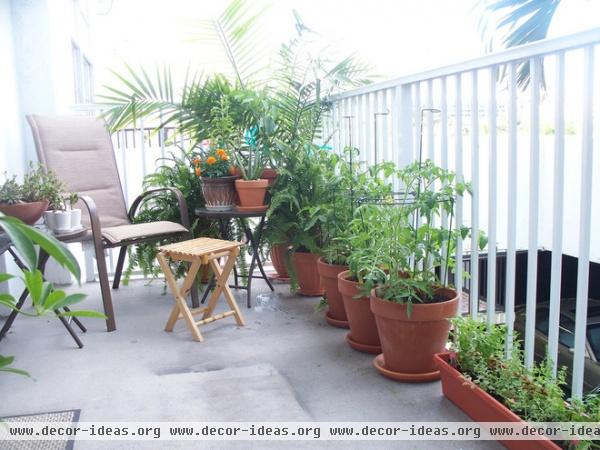
Of course, there are a few rules you’ll need to follow. First, the container has to be the right size for the full-grown plant. Lettuce, spinach and many herbs don’t need a lot of space, but beefy tomatoes and peppers want some growing room.
Second, you’ll need to use a potting mix designed to encourage container growth, not heavy garden soil, which can be too dense to allow plants to thrive. You’ll probably need to water more often; roots can’t work their way out of containers to reach water.
Finally, if you’re placing plants on a balcony, be sure it can handle the weight and that local codes permit pots there. Small pots are generally fine, but you don’t want your container-planted full-size sweet bay to crash down onto the patio of your neighbor below.
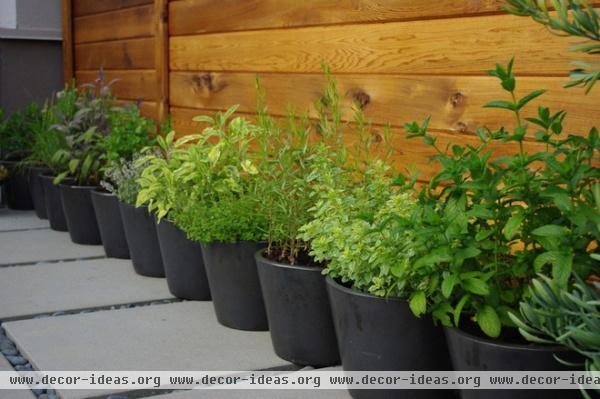
1. Herbs. Herbs thrive in containers of all shapes and sizes, whether they’re sitting on a windowsill or lining a sidewalk. In the case of members of the mint family, if you don’t plant in a container, you’ll be digging mint out of your garden for years to come.
The trick to planting herbs in containers is to match the pot size to the adult size of the plant. Smaller herbs — like chervil, chives, cilantro, marjoram, oregano, parsley, sage, savory, tarragon and thyme — can be grown in containers that are 6 to 12 inches deep and preferably up to 12 inches wide. Basil, lavender and lemongrass prefer 16- to 18-inch containers at a minimum, and rosemary and dill do best in even larger pots.
As for that sweet bay, start it out in an 18-inch pot and plan to either transplant it to the garden or root-prune to keep it in bounds.
See how to grow herb garden essentials
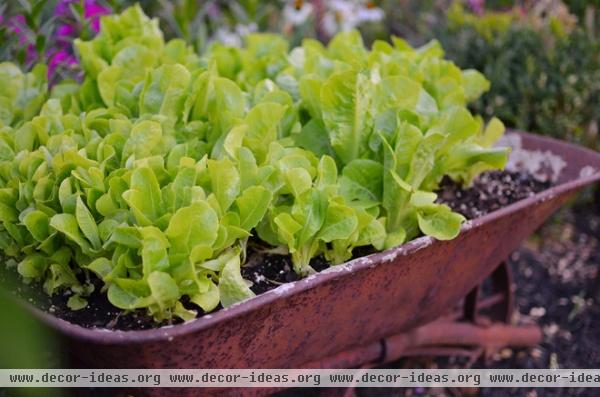
2. Salad greens. Salad greens are another easy choice for a container. Most have very shallow roots, and putting them in a raised container, such as this old wagon, allows them to become garden highlights rather than often-overlooked low-lying plants.
Mass a single type of green in one container or plant a mix. You’ll need a pot only 6 inches deep for most lettuces, lettuce blends, mesclun and microgreens; 8 inches for chicory, radicchio and spinach.
See how to grow salad greens
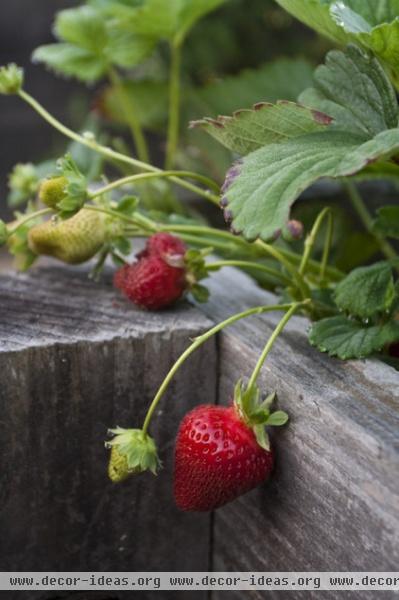
3. Strawberries. One of the pleasures of growing strawberries in a container is the sight of the berries cascading over the side. Another pleasure is that you can put that container close to where you like to sit, then easily reach out to pick a strawberry as you’re relaxing in the garden. For something different, grow strawberries in a hanging container. You’ll have them at eye level while keeping snails and slugs from getting to your crop.
A strawberry jar is the classic choice for a pot, but strawberries aren’t fussy about outer appearances as long as the container is at least 8 inches deep. If you’re planting in a hanging basket, go a little larger, to at least a foot wide and deep.
See how to grow strawberries
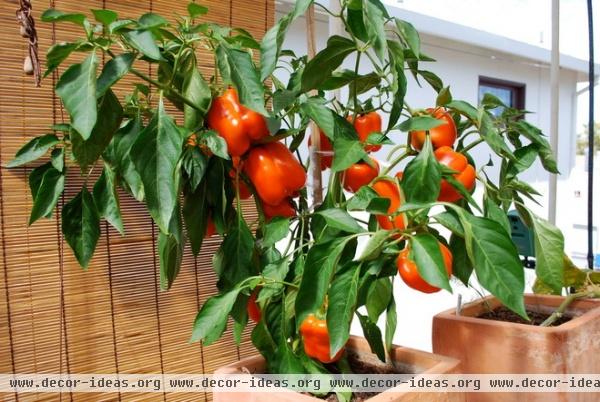
4. Peppers. While a pepper can certainly hold its own against other plants in a vegetable garden, growing one in a container allows you to start it early in a sheltered spot, then move it to its final garden spot, where it can enjoy the summer heat while its fruits slowly ripen. Anything that allows you to harvest peppers of all types earlier than you normally would is a plus for your dining pleasure.
The slight disadvantage of container-grown peppers is that they often aren’t quite as big as their garden-grown counterparts. They’re equally tasty, though, and certainly a bright addition to a balcony or patio garden. Look for a container that is at least 8 inches deep (a foot or more would be even better) and at least 16 to 18 inches wide.
See how to grow peppers
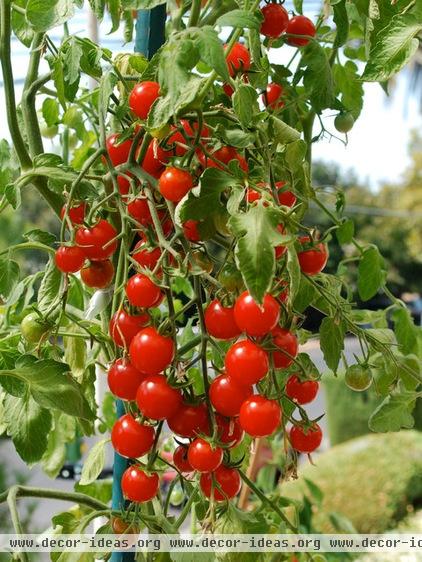
5. Tomatoes. Container-grown tomatoes are just as tasty as those grown in garden soil, and they have an added advantage if you live in an area with a tendency to have soil-borne diseases: Plant in containers and start with new soil every year, and you won’t have to worry about rotating your crop. Once you’ve found your ideal tomato-growing location, you can keep growing there year after year.
As with other edibles, you’ll need to match tomato size to container size, but err on the side of larger. Even the smallest cherry tomatoes will need a pot or hanging basket that’s at least a foot deep and even wider, and the biggest tomatoes will want a planter as large as possible. Also, while seeing the fruit sprawling over the edges might be ideal in smaller containers and hanging baskets, you’ll probably want to stake the largest indeterminate varieties.
See how to grow tomatoes
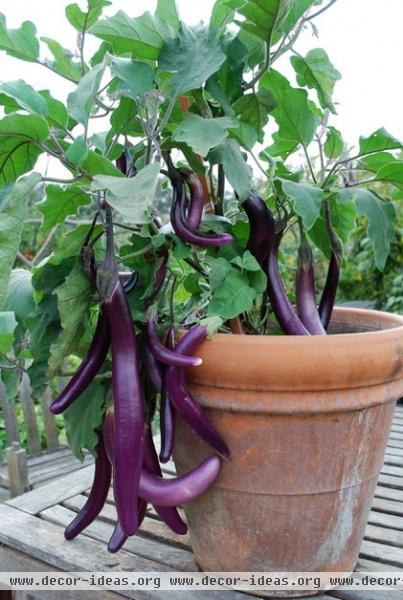
6. Eggplants. The eggplant is often overlooked for both traditional edible gardens and container gardens. It’s a shame, because this really is a gorgeous plant, with beautiful violet-colored spring flowers and shiny bright fruits in shades of purple (and white, green, red and yellow these days).
Eggplants aren’t huge, but they want a bit of space to thrive. Look for a container that is at least 12 inches deep and 16 to 18 inches wide, then give it a place of honor with your other containers. It won’t disappoint.
See how to grow eggplants
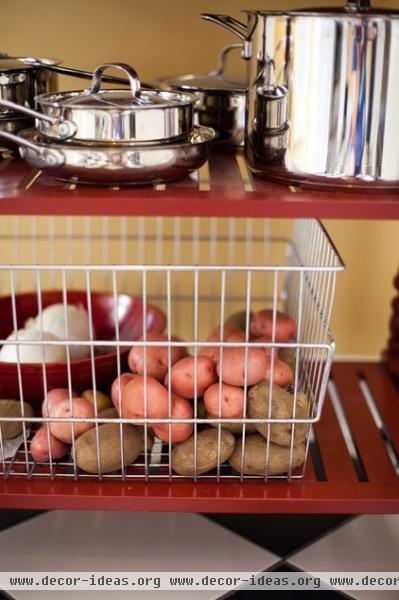
7. Potatoes. If you asked most people about good edibles for container gardens, odds are that potatoes wouldn’t make the list. However, in some ways a container potato garden makes a lot of sense, as long as you choose a container that’s big enough, such as half of a wine barrel.
The reason: Rather than burying potatoes to the desired final depth, you’ll need to plant them at a fairly shallow depth, then add more soil mix on top as the tubers grow. Placing them in a barrel makes this task just that much easier. And while the potatoes continue to grow, you’ll have a leafy green plant with light-colored flowers.
See how to grow potatoes
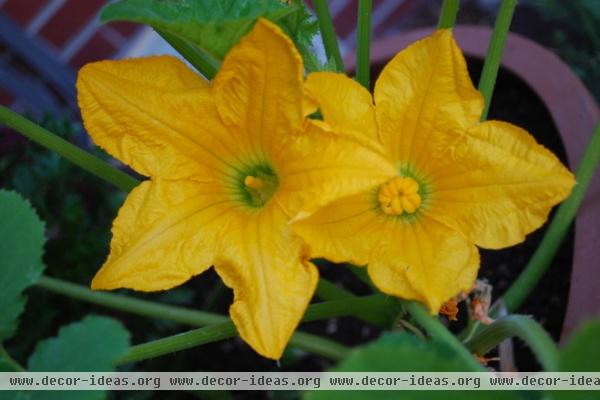
8. Summer squash. Summer squash, especially compact varieties like this patty pan squash, can be kept in bounds when they’re container-grown. No more searching under long lengths of leaves to find the squash before it reaches Godzilla size. And just to play it safe, look for bush varieties rather than vining ones, unless you plan to install a trellis.
Even so, you can’t get by with a minuscule pot for these enthusiastic growers. Look for a pot at least 18 inches in diameter for each squash plant; larger is even better.
See how to grow squash
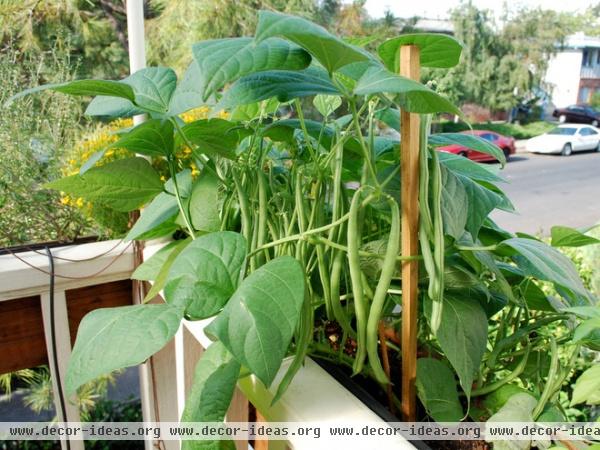
9. Bush beans. Technically, both types of snap beans can grow in a container, but bush beans are the better choice, thanks to their compact growing habit. Fortunately, this still leaves you with a wide range of varieties to choose from.
Look for planters that are fairly wide, though you can go as shallow as 6 inches and still have your crop thrive. If you do decide to grow a vining type, add the support structure before you plant.
See how to grow beans
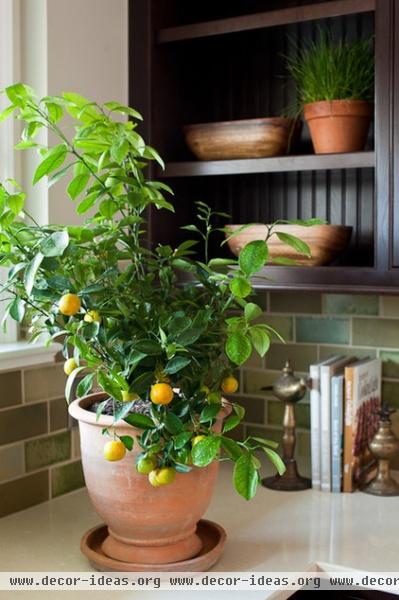
10. Citrus. You may live in a cold-winter climate, but that doesn’t mean you can’t grow your own fresh lemons, limes, oranges and kumquats. You may not end up with a Florida-size citrus tree, but you can keep a smaller variety alive and well by planting it in a container that can be left outside to brighten your summer garden, then brought into a sheltered location, even indoors, during the winter.
Though you can start with a smaller container when the plant is small, in the long run you’re going to want a container at least 18 inches tall and equally wide. For ease of moving, put it on a caster base, then enjoy juice from home-grown oranges, even in Maine.
See more on growing citrus trees
More:
Containers Make Growing Edibles a Cinch
14 Crazy Places to Grow Edibles
Related Articles Recommended












